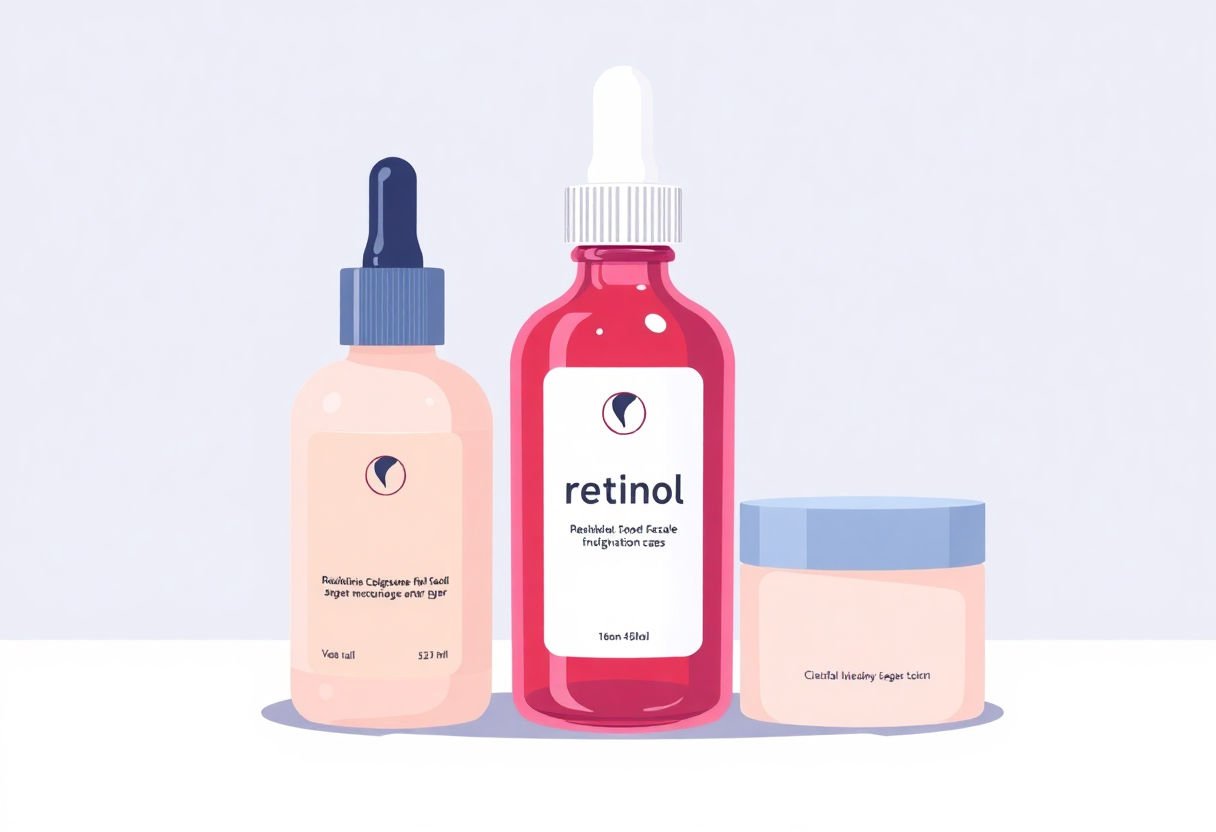Retinol has become skin care’s favorite superstar. It brightens skin, fights fine lines, and calms breakouts. Many proudly include it in their routines. What makes it special? It comes from Vitamin A and helps rejuvenate your complexion. Retinol smooths and firms skin, reducing signs of aging. People use it to clear up stubborn acne too. From improving texture to balancing oils, its benefits seem endless. But, is it for everyone? We explore its secrets, dispel myths, and guide you on how to use and choose the best products. Ready to unlock the power of retinol? Let’s begin.
Key Takeaways
- Retinol boosts skin health by encouraging cell turnover and improving texture.
- This ingredient reduces wrinkles and fine lines, making it a popular choice for anti-aging.
- Retinol helps treat acne, reducing outbreaks and clearing pores.
- It works best with consistent use in a skincare routine for visible results.
- Start with a low concentration to minimize potential skin irritation.
Understanding Retinol: The Basics
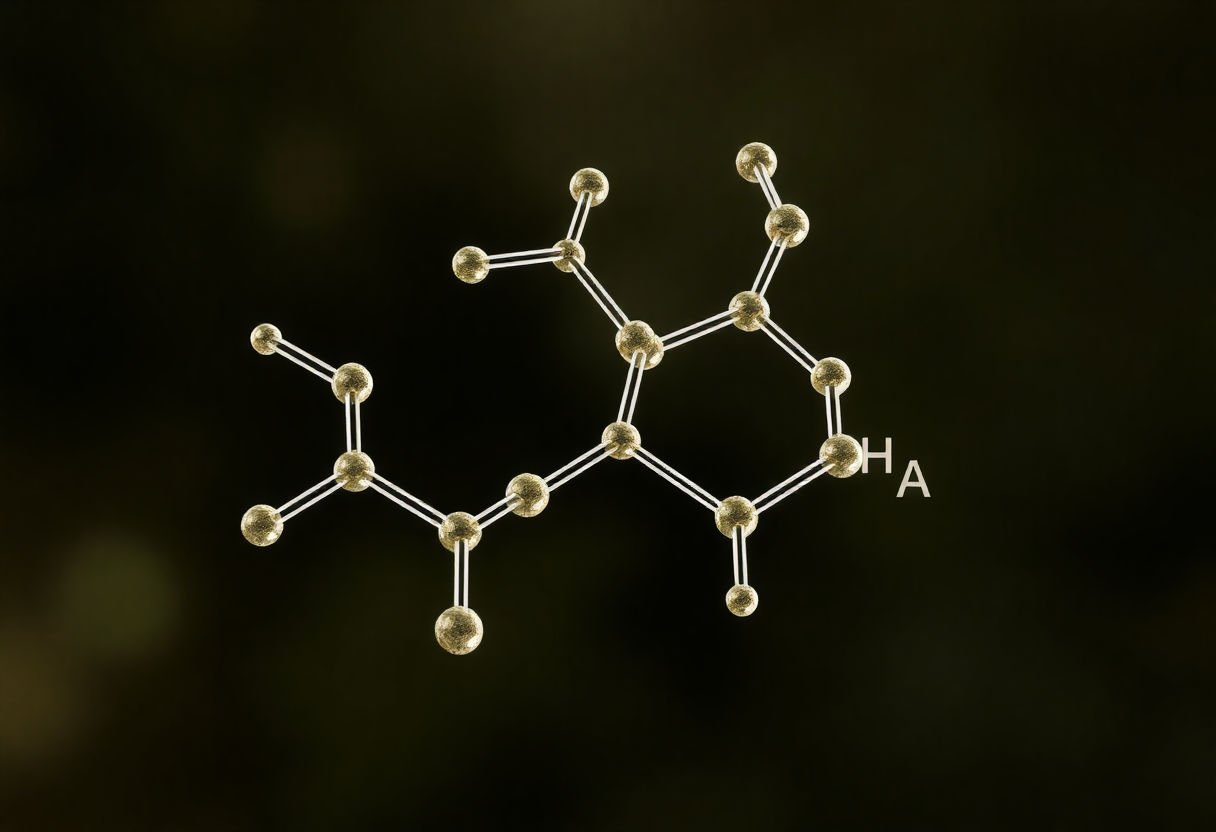
Retinol is a unique ally in the quest for healthy skin. It belongs to the vitamin A family. People often use it in skincare because of its powerful effects.
What makes retinol special? It acts as a kind of building block, helping skin cells grow and repair themselves. This helps skin look fresh and smooth. Scientists first identified retinol many decades ago. At first, they used it for health supplements. Along the way, its benefits for skin became clear.
Retinol is different from other skin products. It can boost collagen production, which adds structure to your skin. Think of collagen as scaffolding that keeps skin firm. When retinol helps create more collagen, it’s like adding another layer of support.
Retinol’s composition makes it effective. Imagine a carpenter with a toolbox. Retinol is like a set of special tools. These tools can fix up the skin in ways few other substances can. As a natural derivative of vitamin A, retinol fits right into skincare routines.
When you apply retinol, it doesn’t stay on the surface. It sinks into deeper layers of skin, triggering changes at the cellular level. This is what gives retinol its edge over many other typical creams and lotions. Plus, people of all ages can use retinol. Its benefits don’t stop at fighting the first signs of aging. It targets multiple skin concerns.
Thus, retinol goes beyond being a mere skincare ingredient; it transforms into a dynamic ally for healthier, youthful skin.
How Retinol Works on the Skin
Retinol, a form of Vitamin A, acts on skin like a cheerleader for your cells. It boosts new cell production and sheds old skin layers. Think of your skin as a book. Retinol erases the worn-out pages and replaces them with fresh ones. This makes the skin smoother and gives it a fresh glow.
Retinol enters deep into the layers of the skin. It gets to the cells where it speeds up the turnover process. This turnover helps clear skin by pushing old skin out quickly. Newer skin often handles sun damage and pollutants better.
Retinol does not just stop there. It talks to collagen, another vital part of skin. With retinol’s help, collagen production gets a boost. Collagen keeps the skin firm and helps reduce fine lines.
How does it feel? At first, some may notice peeling or slight redness. It feels like your skin is getting used to a new routine. Over time, this subsides. The long-term benefits? Clearer, firmer skin without deep lines.
Many recognize retinol for its ability to fight signs of aging and brighten the skin tone. But it works to improve overall skin health.
You may like to use retinol at night. This way, it can work as you rest and not compete with sunscreen during the day.
In short, retinol acts like a personal trainer for the skin, keeping it fit and glowing.
Anti-Aging Benefits of Retinol
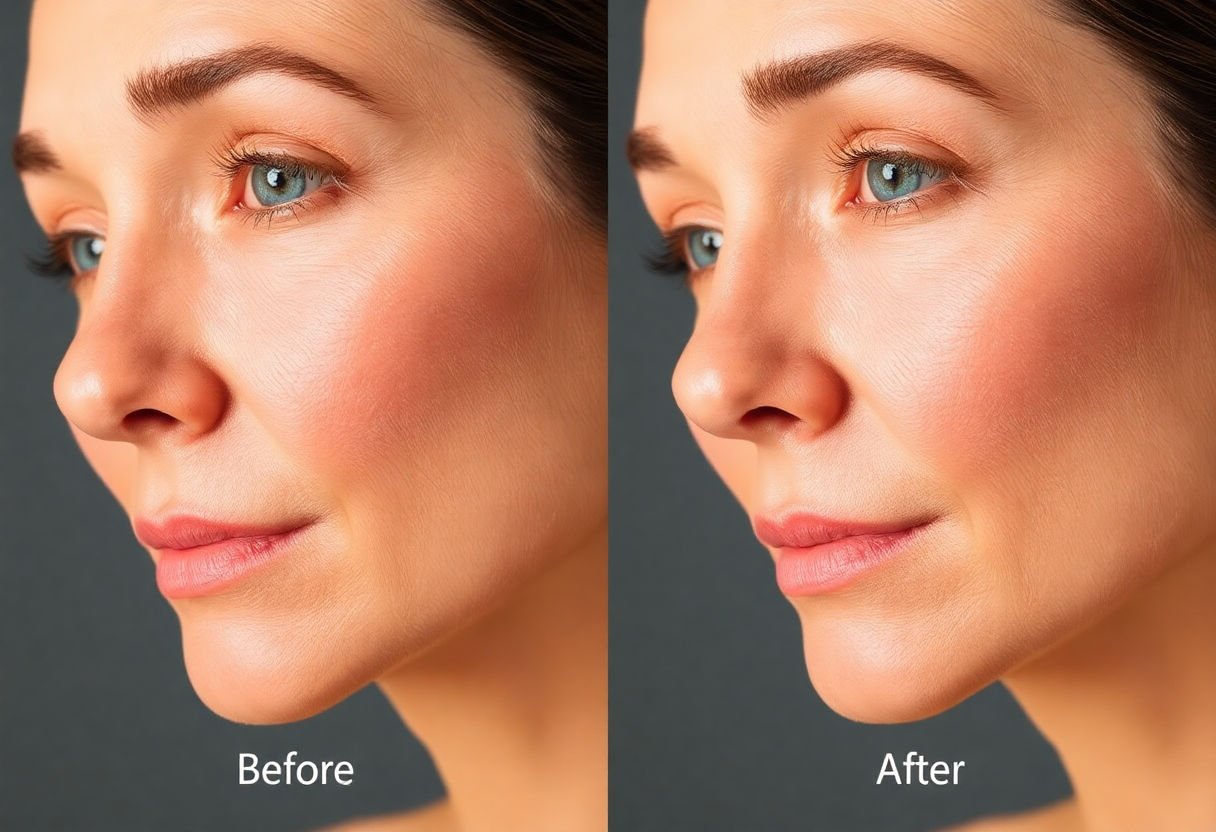
Retinol shines as a hero in anti-aging skincare. It helps with wrinkles and fine lines. But what makes it so effective?
Retinol boosts cell turnover. Think of it as shedding old skin to make way for new. This process helps to smooth the skin. Lines look less deep, and skin feels soft.
Imagine a wilted flower. Retinol acts like water to bring it back to life. It revitalizes tired skin, leaving it fresh and glowing.
Collagen production sees a rise with retinol use. Collagen gives skin its firmness. As we age, collagen breaks down. Retinol steps in to help rebuild it.
Experts say retinol can lighten dark spots. Sun damage fades when you use a retinol product over time. Skin tone evens out amazingly.
Retinol offers benefits not just for aging signs but for skin texture, too. Over time, skin may feel smoother to the touch. Pores appear smaller.
Here’s why many trust retinol:
- Reduces wrinkles and lines
- Boosts collagen to firm skin
- Evens out skin tone
- Improves skin texture
By using retinol, many say their skin looks and feels younger. It’s no wonder so many people include it in their daily skincare routine.
Retinol for Acne and Breakouts
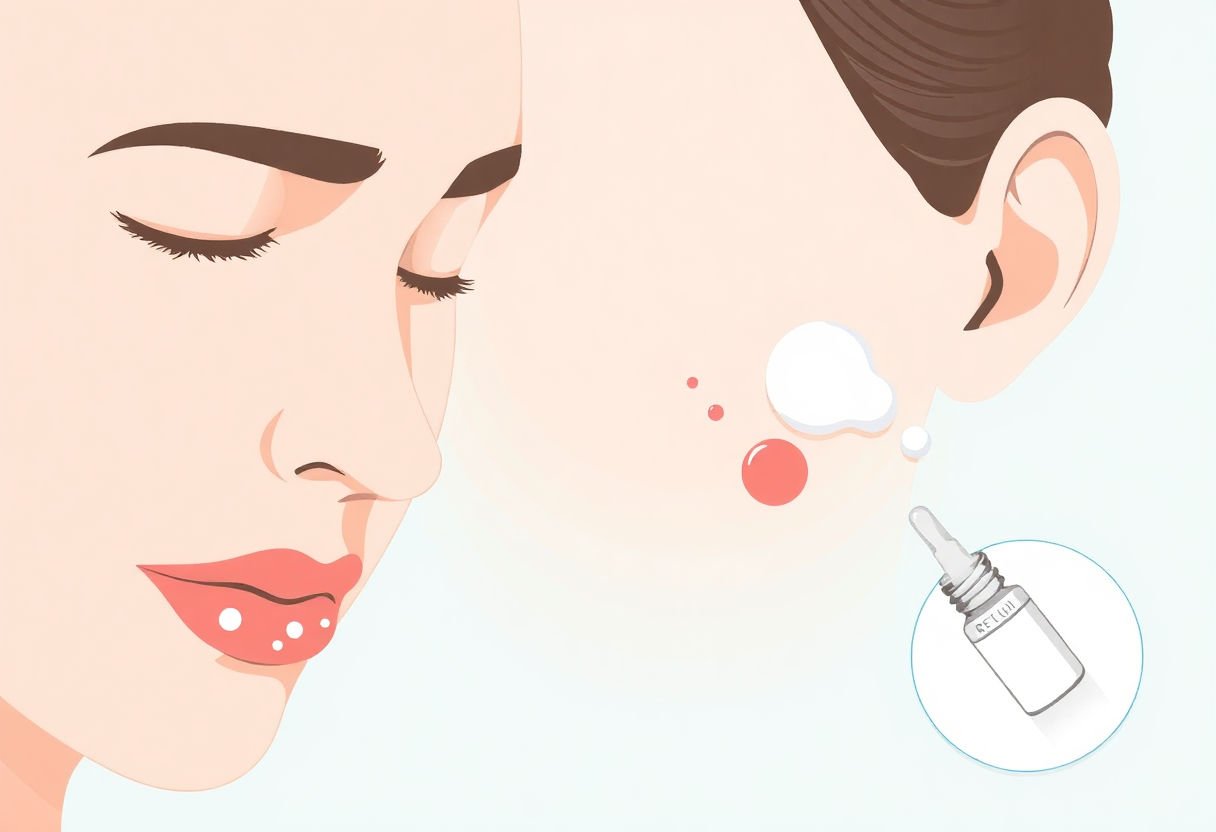
Retinol helps battle acne and breakouts. When skin keeps producing too much oil, pores get clogged. Pimples pop up. Retinol steps in by speeding up cell turnover. This process helps clear out blocked pores. You end up with fewer blackheads and whiteheads.
Why Retinol Works for Acne:
- Clearing Pores: It opens clogged pores. Dead skin cells don’t stick around.
- Reducing Inflammation: Retinol calms redness. Swelling goes down.
- Preventing Future Breakouts: It regulates oil production. Less oil means less chance of acne forming.
Retinol doesn’t work overnight. You need patience. At first, the skin may peel or feel dry. This reaction is normal. It means retinol is getting started.
Using Retinol Safely:
- Start Slow: Apply it just twice a week. Let your skin adjust.
- Moisturize: Use a gentle cream to prevent dryness.
- Protect Your Skin: Wear sunscreen daily. Retinol makes skin more sensitive to the sun.
Many teens struggle with acne. It can be frustrating and embarrassing. Retinol offers hope. With regular use, it can dramatically improve your skin. Consistency and patience are key.
Incorporating Retinol into Your Skincare Routine
To add retinol to your skincare, start slow. Use it only at night. Begin with a pea-sized amount once or twice a week. Let your skin adjust. This helps avoid redness and peeling.
Here is a simple guide to make retinol work best:
-
Cleanse your face gently. Use a mild cleanser. Avoid harsh scrubs.
-
Apply retinol to dry skin. Wait a few minutes after washing.
-
Follow up with a moisturizer. This helps soothe your skin.
-
Use a sunscreen every morning. Retinol can make your skin sensitive to the sun.
Mixing retinol with other products can help improve results:
-
Hyaluronic acid: Keeps skin hydrated. Use it before or after your retinol.
-
Niacinamide: Calms your skin. Reduces redness and irritation.
Some products do not mix well, like benzoyl peroxide or strong acids. These can irritate the skin when used with retinol.
Everyone’s skin is different. Watch how your skin reacts. If redness or peeling occurs, reduce the frequency. Adjust until you find a balance. Your skin will feel smoother over time. Patience is key. With care and consistency, retinol can transform your skin care routine.
Possible Side Effects of Retinol
Using retinol can come with side effects. Some people might notice their skin feels dry or begins to flake. This happens because retinol speeds up how fast your skin sheds dead cells. Imagine it like a snake shedding its skin.
Some experience redness or a slight stinging sensation. This often appears when starting retinol. Like trying a new spicy food, your skin might need time to adjust.
For a few, retinol can make their skin more sensitive to sunlight. Think of it like how your eyes might squint more in bright light without sunglasses. Using sunscreen becomes very important.
Some users might not experience these effects at all, but here’s a quick list of what might happen:
- Dryness or flaking
- Redness or irritation
- Increased sun sensitivity
If any side effect seems too strong or painful, it’s best to stop using the product. Talking to a skincare expert can help. They know how to balance the benefits and side effects safely.
Choosing the Right Retinol Products
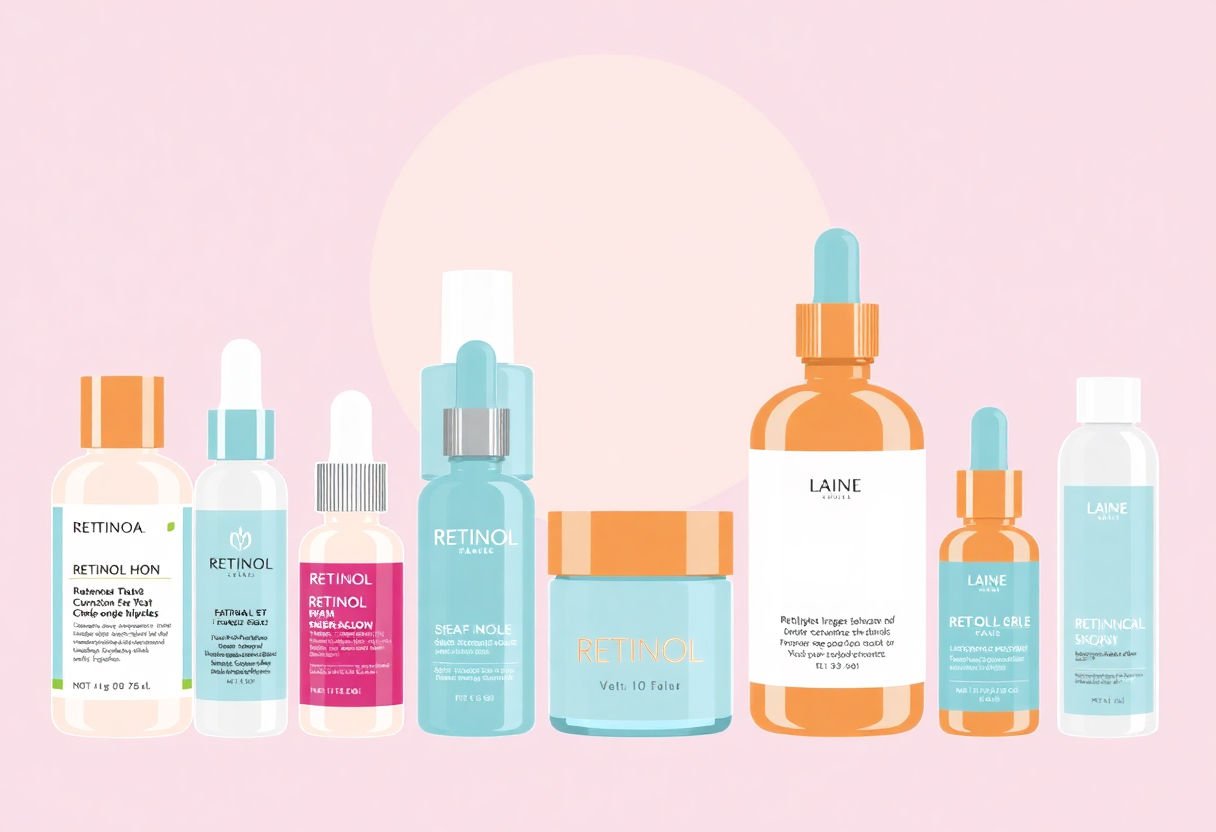
Choosing the right retinol product can feel like sorting through a candy store. Many types and strengths are available, so it’s key to find what fits your skin best.
Understand Your Skin Type
- Oily Skin: Look for gels or serums. They won’t add extra shine.
- Dry Skin: Go for creams. They provide extra moisture.
- Sensitive Skin: Choose products with lower retinol concentrations. Less chance of irritation.
Check Product Labels
Retinol products come in different strengths. You might see 0.25%, 0.5%, or 1% on labels. Start small if you’re new. A higher percent can irritate new users.
Consider Your Skincare Goals
- To reduce wrinkles: Look for formulations that mention anti-aging benefits.
- To fight acne: Choose products that help clear pores.
Consult with Experts
A word of wisdom from dermatologists: “Patch-test a small area first.” This helps avoid full-face irritation.
Think About Other Ingredients
Certain ingredients work well with retinol. Look for products with vitamins C and E. They boost retinol’s effects. Avoid pairing with benzoyl peroxide. It can deactivate retinol.
It is simple to find a product that meets those needs. Remember, patience matters! Changes happen, but slowly.
Myths and Facts About Retinol
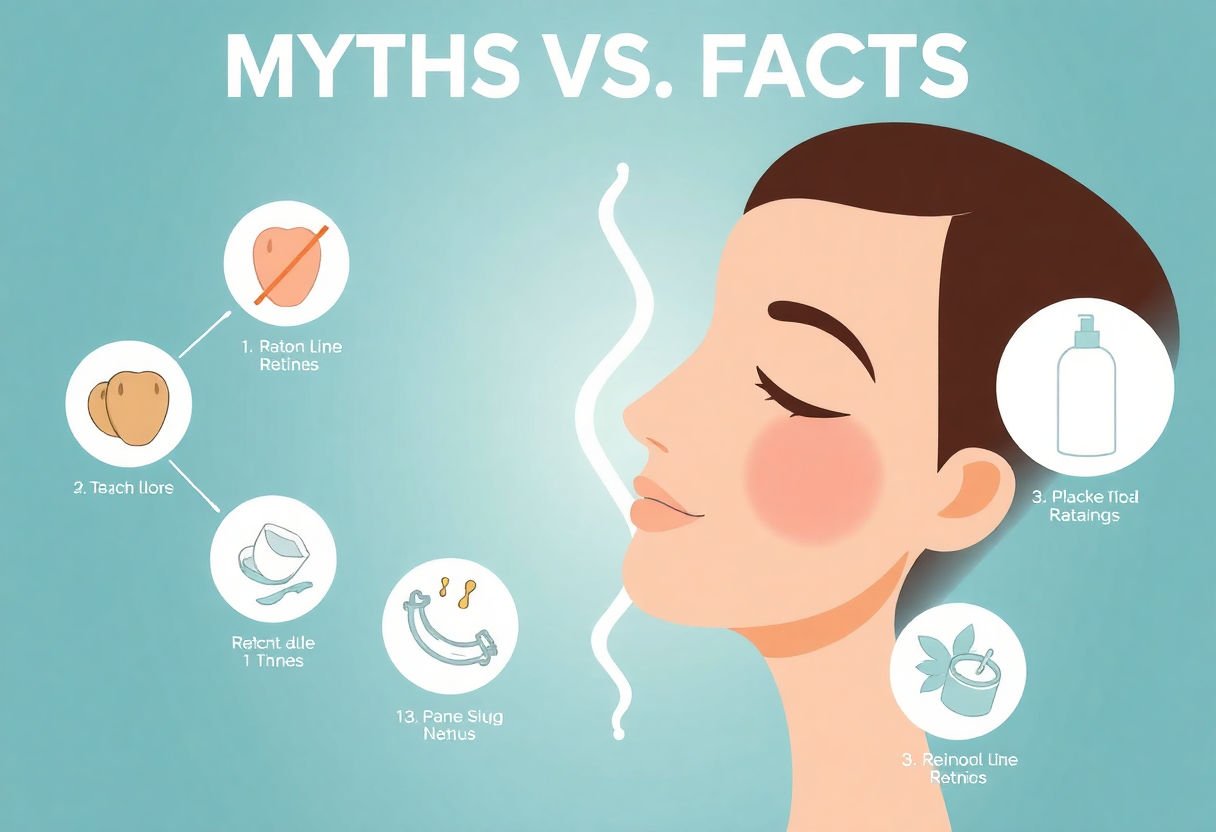
Retinol often gets surrounded by myths. Some think it’s too harsh. Others believe it’s a miracle cure. Let’s look at the facts and clear up the confusion.
Myth 1: Retinol Peels Your Skin
Fact: Retinol does help to shed old skin cells. But it won’t make your skin peel off like a snake. You might notice some light flaking when you first use it. This is normal. Use a moisturizer to help keep your skin smooth.
Myth 2: Retinol is Only for Acne
Fact: Retinol fights acne and reduces fine lines. It can brighten skin too. Retinol sends signals to your skin, telling it to grow new cells. This can make your skin look fresh and even.
Myth 3: Retinol Causes Sun Damage
Fact: Retinol does make your skin a bit more sensitive to the sun. Always wear sunscreen when you use it. It’s a good habit to wear sunscreen daily, retinol or not.
Myth 4: You Can’t Use Retinol with Sensitive Skin
Fact: Sensitive skin types can still use retinol. Start with a small amount, and don’t use it every day. Patience is key. Your skin needs time to get used to retinol.
Retinol offers many benefits, but it’s important to use it wisely. Understanding the truth about retinol helps you enjoy its benefits without falling for myths.
Conclusion
Retinol offers powerful benefits for skin health, from reducing wrinkles to fighting acne. With its ability to promote smoother, youthful skin, it’s clear why many add it to their skincare routines. Choosing the right retinol product based on skin type enhances outcomes. Stay informed about potential side effects to ensure safe use. As retinol remains a go-to for many, its science-backed benefits continue to shine. Consider adding retinol to your skincare for a healthier, radiant future.
Frequently Asked Questions
What is retinol and why is it important for skin?
Retinol is a type of vitamin A that helps improve skin health. It encourages cell turnover, which means it helps shed old skin cells and promotes new, healthy skin. This process can reduce wrinkles and improve texture.
How does retinol help with acne?
Retinol works by unclogging pores and preventing breakouts. It also helps clear dark spots from old pimples, making the skin look smoother and clearer.
Can all skin types use retinol?
Most skin types can use retinol, but people with sensitive skin should start slowly. It’s best to use it a couple of times a week at first. Gradually increase the frequency to see how the skin reacts.
Are there any side effects of using retinol?
Some people might experience redness or dry skin at first. This is normal and can be managed with moisturizer. If the irritation continues, consider using it less frequently.
How long does it take to see results from retinol?
Results can vary, but many people notice changes within a few weeks. For best results, continue using retinol as part of a regular skincare routine.
